
Giovanni Battista Draghi, usually referred to as Giovanni Battista Pergolesi, was an Italian Baroque composer, violinist, and organist, leading exponent of the Baroque; he is considered one of the greatest Italian musicians of the first half of the 18th century and one of the most important representatives of the Neapolitan school.
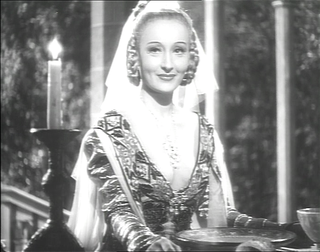
Clara Calamai was an Italian actress.
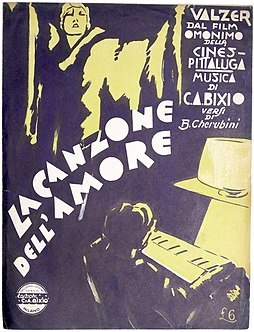
The Song of Love is a 1930 Italian romance film directed by Gennaro Righelli and starring Dria Paola, Isa Pola and Elio Steiner. It was the first Italian talking film. Alessandro Blasetti's film Resurrection was actually shot first, but delays meant that it was not released until 1931.

Tina Lattanzi was an Italian actress and voice actress.

The Unfaithfuls is a 1953 Italian comedy drama film directed by Mario Monicelli and Steno and starring Gina Lollobrigida.
Loyalty of Love is a 1934 Italian historical drama film directed by Guido Brignone and starring Marta Abba, Nerio Bernardi and Luigi Cimara. It is based on the story of Teresa Confalonieri, a celebrated figure of the Italian reunification campaign. It was one of several films made during the 1930s that portrayed this era. It premiered at the Venice Film Festival in August 1934.
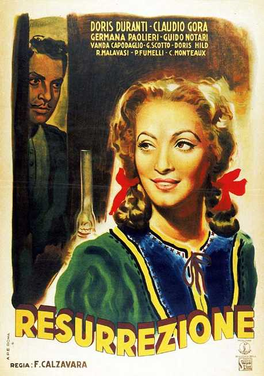
Resurrection is a 1944 Italian drama film directed by Flavio Calzavara and starring Doris Duranti, Claudio Gora and Germana Paolieri. It is an adaptation of the 1899 work Resurrection, the final novel by the Russian writer Leo Tolstoy. It was one of a significant number of Italian films based on works of Russian literature made during the era. It was made at the Scalera Studios in Rome.
The Charmer is a 1931 Italian comedy film directed by Guido Brignone and starring Armando Falconi, Tina Lattanzi and Ada Dondini. It is part of the White Telephone genre of films. It was shot at the Cines Studios in Rome.

The Blind Woman of Sorrento is a 1934 Italian drama film directed by Nunzio Malasomma and starring Dria Paola, Corrado Racca and Dino Di Luca. It is an adaptation of the 1852 novel of the same title by Francesco Mastriani. The novel has been adapted into film on two other occasions: the 1916 silent The Blind Woman of Sorrento and 1953's The Blind Woman of Sorrento.
Bayonet is a 1936 Italian historical adventure film directed by Ferdinando Maria Poggioli and starring Nerio Bernardi, Leda Gloria and Mimì Aylmer. It portrays the life of Giacomo Casanova.

The Man with the Claw is a 1931 Italian mystery film directed by Nunzio Malasomma and starring Dria Paola, Carlo Fontana, and Elio Steiner. It was made at the Cines Studios in Rome with sets designed by the art director Daniele Crespi. The film is one of several regarded as a possible precursor to the later giallo genre. A separate German version The Paw was also produced.
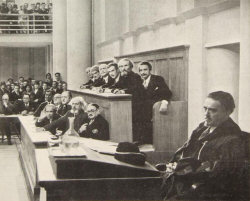
Before the Jury is a 1931 Italian crime film directed by Guido Brignone and starring Marcella Albani, Lia Franca and Carlo Ninchi. It was made at the Cines Studios in Rome. The film is a precursor to the later genre of Giallo films.
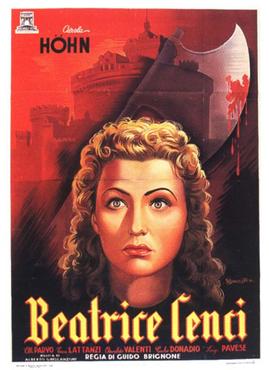
Beatrice Cenci is a 1941 Italian historical drama film directed by Guido Brignone and starring Carola Höhn, Giulio Donadio and Tina Lattanzi. It is one of several films portraying the story of the sixteenth century Italian noblewoman Beatrice Cenci.
Lowered Sails is a 1931 Italian drama film directed by Anton Giulio Bragaglia and starring Dria Paola, Carlo Fontana and Umberto Guarracino.
The Knight of San Marco is a 1939 Italian historical drama film directed by Gennaro Righelli and starring Mario Ferrari, Dria Paola and Laura Nucci. It is set during the Risorgimento. It was made at Cinecittà, with sets designed by the art director Alfredo Montori.

L'Olimpiade is an opera in the form of a dramma per musica in three acts by the Italian composer Giovanni Battista Pergolesi. Pergolesi took the text, with a few modifications, from the libretto of the same name by Pietro Metastasio. The opera first appeared during the Carnival season of 1735 at the Teatro Tordinona in Rome and "came to be probably the most admired" of the more than 50 musical settings of Metastasio’s drama.
Carlo Simoneschi was an Italian stage and film actor. He also directed a number of films during the silent era.
The Last Adventure is a 1932 Italian comedy film directed by Mario Camerini, starring Armando Falconi and Diomira Jacobini.

Big Shoes is a 1940 Italian "white-telephones" comedy film directed by Dino Falconi and starring Amedeo Nazzari, Lilia Silvi and Elena Altieri. It is based on a play by Sándor Hunyady which had previously been turned into a 1939 Hungarian film Istvan Bors.

The Hotel of the Absent is a 1939 Italian mystery thriller film directed by Raffaello Matarazzo and starring Paola Barbara, Carla Candiani and Camillo Pilotto. It was shot at the Cinecittà Studios in Rome. The film's sets were designed by the art director Piero Filippone. It is also known as the The Property of the Absent.













